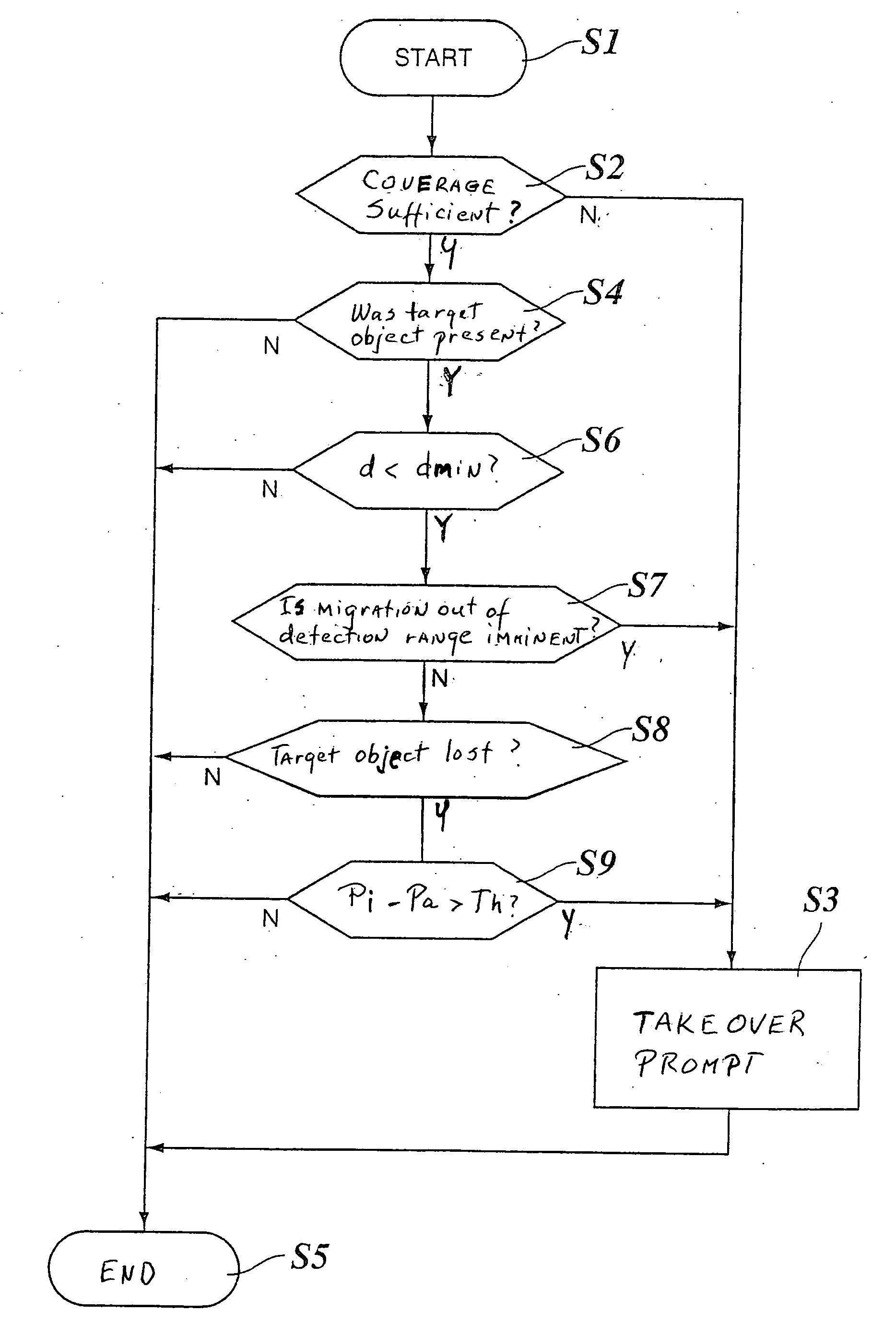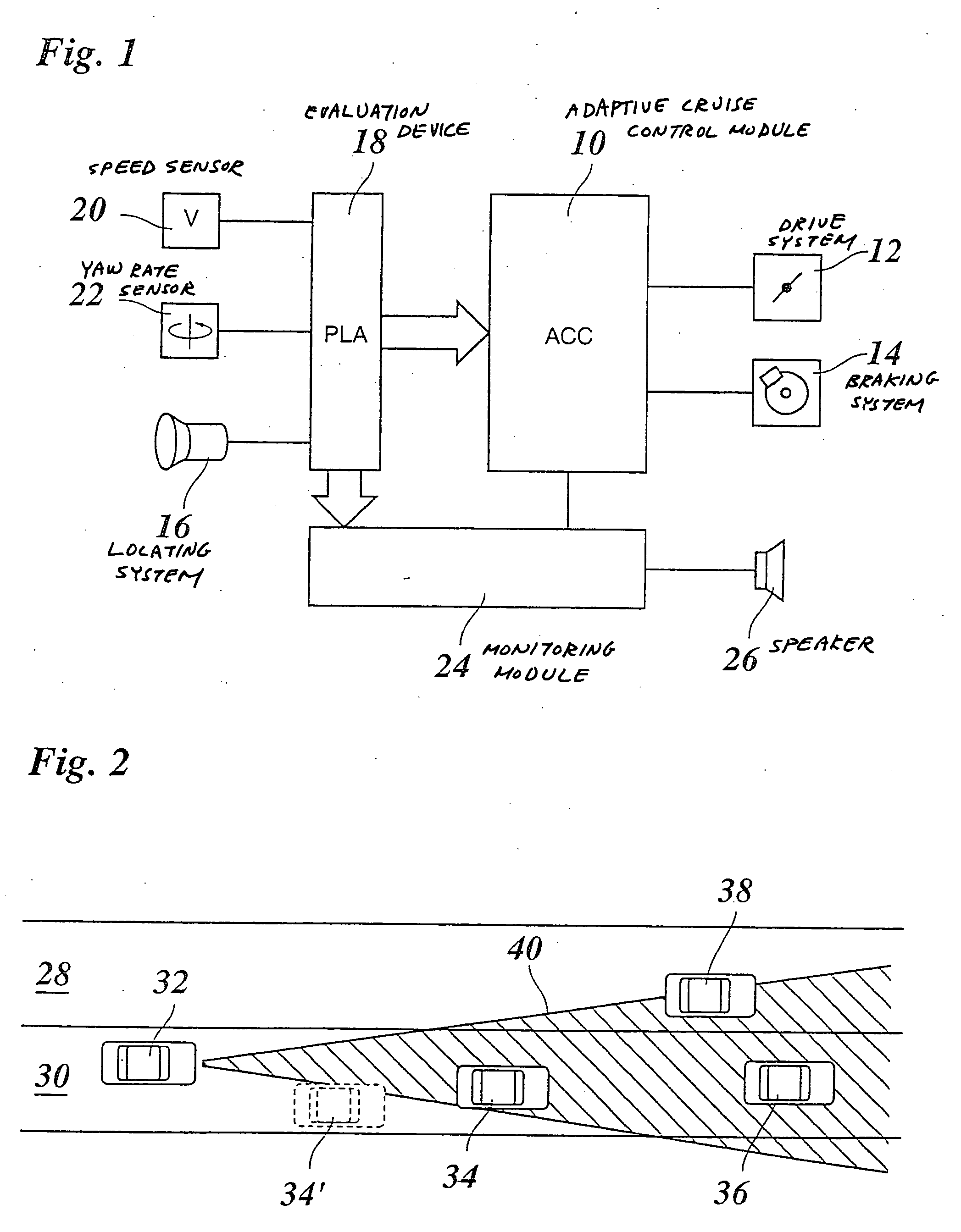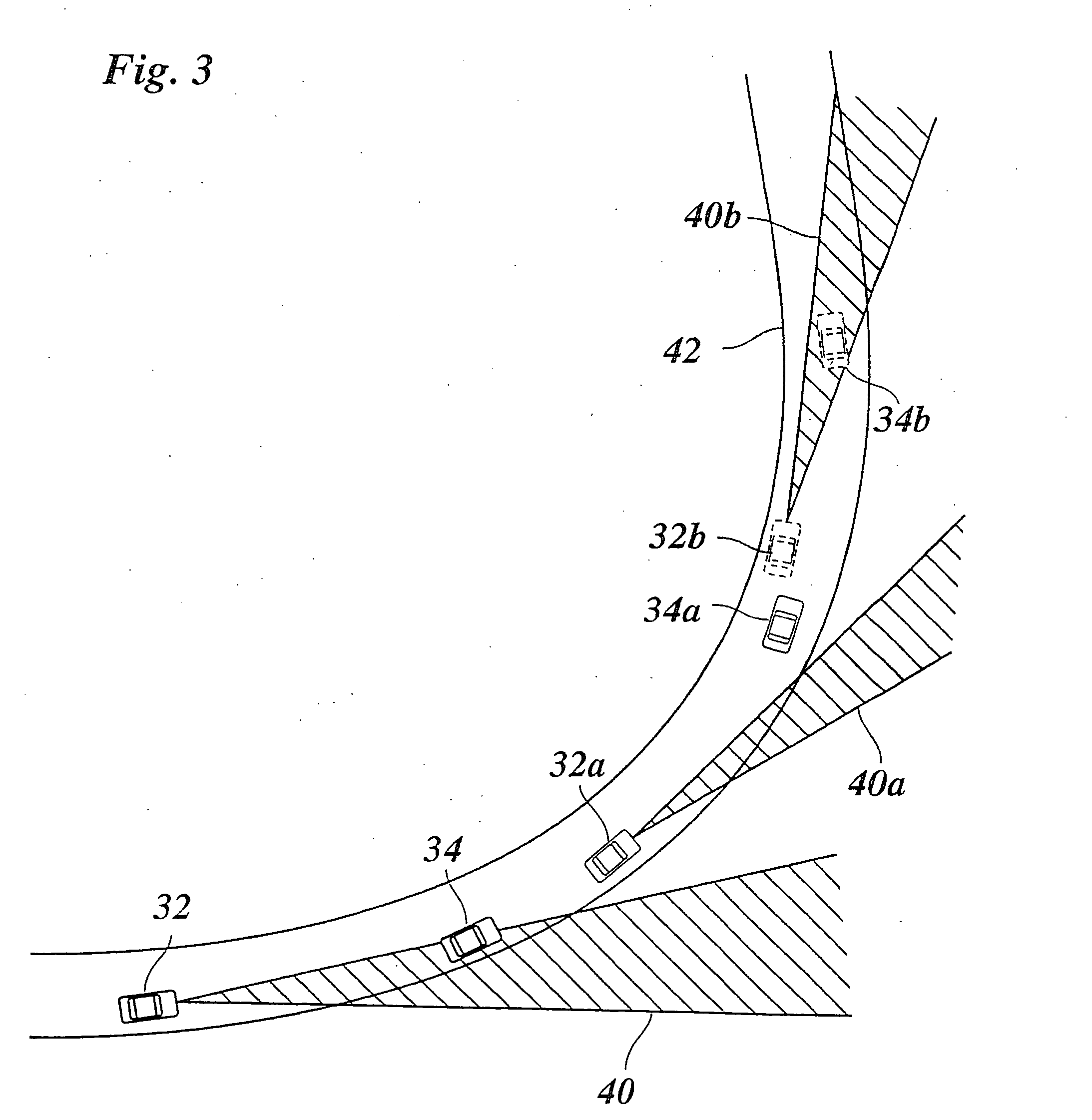Speed regulator with distance regulating function
- Summary
- Abstract
- Description
- Claims
- Application Information
AI Technical Summary
Benefits of technology
Problems solved by technology
Method used
Image
Examples
Embodiment Construction
[0023] Since the basic design and mode of operation of a speed controller or an ACC (adaptive cruise control) system for motor vehicles are known, FIG. 1 shows only the most important components of a system of this type in a simplified block diagram. The heart of the system is an ACC module 10 that intervenes in the motor vehicle's drive system 12 and braking system 14 and, if the road is clear, regulates the driving speed to the desired speed set by the driver. A locating system 16, in the form of a direction-selective multibeam radar mounted on the front of the vehicle in the example shown, measures the distances and relative speeds of the vehicles ahead and also the stationary targets that are within the detection range of the radar. The locating system 16 also measures the azimuth angle of the detected objects relative to the current straight-line direction of the vehicle. The locating data measured by locating system 16 for all detected objects is transmitted to an evaluation d...
PUM
 Login to View More
Login to View More Abstract
Description
Claims
Application Information
 Login to View More
Login to View More - R&D
- Intellectual Property
- Life Sciences
- Materials
- Tech Scout
- Unparalleled Data Quality
- Higher Quality Content
- 60% Fewer Hallucinations
Browse by: Latest US Patents, China's latest patents, Technical Efficacy Thesaurus, Application Domain, Technology Topic, Popular Technical Reports.
© 2025 PatSnap. All rights reserved.Legal|Privacy policy|Modern Slavery Act Transparency Statement|Sitemap|About US| Contact US: help@patsnap.com



